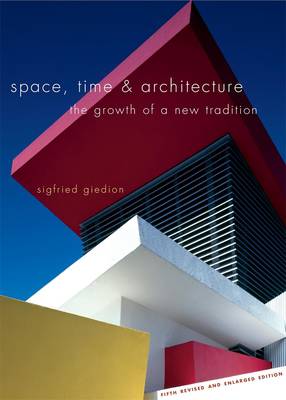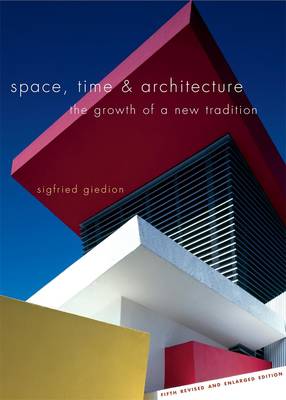
Je cadeautjes zeker op tijd in huis hebben voor de feestdagen? Kom langs in onze winkels en vind het perfecte geschenk!
- Afhalen na 1 uur in een winkel met voorraad
- Gratis thuislevering in België vanaf € 30
- Ruim aanbod met 7 miljoen producten
Je cadeautjes zeker op tijd in huis hebben voor de feestdagen? Kom langs in onze winkels en vind het perfecte geschenk!
- Afhalen na 1 uur in een winkel met voorraad
- Gratis thuislevering in België vanaf € 30
- Ruim aanbod met 7 miljoen producten
Zoeken
Omschrijving
"The standard work on the development of modern architecture."--Walter Gropius
"Giedion's accomplishment remains unmatched."--José Luis Sert Sigfried Giedion was an unlikely candidate for the Charles Eliot Norton Professorship in Poetry at Harvard. Trained as a mechanical engineer and an art historian, the Swiss polymath had a tenuous command of English and little name recognition when he accepted the prestigious yearlong post in 1938, narrowly edging out the novelist Thomas Mann. After his twelve Norton Lectures were published in 1941, however, they quickly captured the imagination of a generation of artists, architects, and students. Revised and expanded four times since its initial publication and translated into half a dozen languages, Space, Time and Architecture remains an unsurpassed classic in its field--a veritable bible of architectural modernism. Giedion delves deeply into the techniques that have made modern architecture possible, from the development of structural engineering to the increasingly sophisticated uses of concrete, glass, and steel. Yet he never loses sight of the human feelings and activities that bring structures to life. Starting with the one-point perspective that defined the Renaissance città ideale and moving through the stark geometries of Le Corbusier and Mies van der Rohe, he vividly illustrates how evolving conceptions of space, time, and motion have molded both the contours of our built environment and our daily lives. Weaving a rich visual tapestry, Space, Time and Architecture juxtaposes over five hundred architectural drawings and photographs with painting, sculpture, and industrial design to make surprising connections across scale and medium. Throughout, Giedion remains tenaciously convinced that architecture offers hope for a grand unification: of reason and emotion, of science and art, and even of human civilization itself.Specificaties
Betrokkenen
- Auteur(s):
- Uitgeverij:
Inhoud
- Aantal bladzijden:
- 960
- Taal:
- Engels
- Reeks:
- Reeksnummer:
- nr. 27
Eigenschappen
- Productcode (EAN):
- 9780674030473
- Verschijningsdatum:
- 1/10/2008
- Uitvoering:
- Paperback
- Formaat:
- Trade paperback (VS)
- Afmetingen:
- 175 mm x 241 mm
- Gewicht:
- 1560 g

Alleen bij Standaard Boekhandel
+ 130 punten op je klantenkaart van Standaard Boekhandel
Beoordelingen
We publiceren alleen reviews die voldoen aan de voorwaarden voor reviews. Bekijk onze voorwaarden voor reviews.









